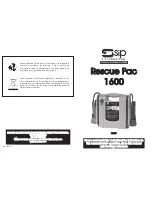
409-32048
Rev A
19
of 64
The spe
ed starts at “Run Speed” (entered in the “Servo Parameters” edit screen) and changes linearly
(“ramps”) dow
n to the speed given in step 1. When step 1 is reached, the speed begins ramping down to
the speed given in the next step processed. This will genera
lly be step 2, but not if a “Go To” action
programmed in step 1 is executed.
Typical speeds range from 1.8”/ second during approach down to 0.02”/ second when pressing.
Some
experimenting may be required to optimize the process. Some connectors are more fragile than others
and may require slow speeds, while others can be pressed quickly.
“Comments”
-
This entry is for your use as information and reminders. Typically each step has a purpose
such as “rapid to clearance above connector” or “slow down to enter connector and engage pins”, etc
.
Figure 20
”Profile Revision” –
This is an optional entry used to track changes to the profile file.
“Pull (retract) Tool Shot pin at Line” –
This option allows selection of which line in the Profile that the
Tool shot pin is retracted. Normally, this should be set to Line 1. In most cases it will be desirable to
retract the Tool shot pin before the tool enters the connector during a press cycle.
“Start”
-
This is the distance between the board surface and the bottom (seating surface) of the
connector when PARS force readings are started. A typical number is between 0.030 - 0.020 in.
“Distance”
-
This is the distance over which force readings are averaged for PARS use. A typical number
is 0.010
–
0.015 in. The shorter the distance, the fewer the number of points averaged. Look at the screen
plot after the connector is pressed (PARS information is overlaid on the graph) to be sure the average is
being taken over the correct range.
“Height Above Board Help”
-
A text and graphic help screen is provided when this button is pressed.
“PARS Help”
-
A text and graphic help screen is provided for PARS when this button is pressed.
“Action Errors”
-
Up to eight errors can be defined here. They are used in the “Action” columns above.
Typical errors are “Premature Contact”, or “Excessive Force”, or “Missing Connector”.
Saving The File
Select “File” from the dropdown menu, then “Save” or “Save As”, then
“Exit”.
If you press “Exit” before
saving, you will be warned and given the opportunity to save or quit without saving.
Example
Figure 21
The screen capture example shown in Figure 21 is a typical PARS press profile. The comments at the right end
of each line indicate the action that line will perform. In general, PARS pressing is the preferred method
because it limits excess pressing force but still presses the connector to the board surface. Fragile connectors
that cannot accept any excess force must be pressed to height as described in the example below.
Example #1
–
Pressing with PARS
















































